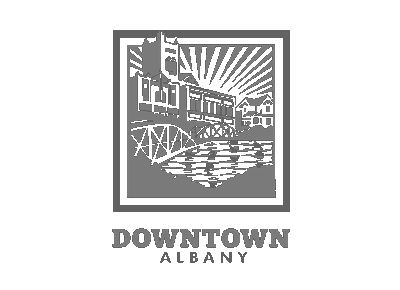The City of Albany is subject to flooding from several different sources which include:
Riverine Flooding: The Willamette River, Calapooia River, Oak Creek, Periwinkle Creek, Cox Creek, Burkhart Creek, Truax Creek, and the Santiam-Albany Canal.
Local Flooding: Local storm water drainage.
Flooding on streams and rivers in Albany generally results from large winter storms from the Pacific. Often the heavy rainfall comes at the same time as snow-melt runoff. These large winter storms often cause simultaneous flooding on all rivers and streams in an affected area. Historically, most major floods in Albany have occurred in the months of December, January and February, although flooding in other months is possible.
Flood records for the City of Albany indicate there is no regular pattern, in which floods occur. Heavy rains that saturate the ground and fill the rivers and creeks coupled with warming weather that melts heavy snow in the mountains and foothills create the major flooding that Albany has seen over the last 150 years. The last major flooding took place in 1964 and 1996. Before these floods, major events occurred in 1943 and 1945 and are the only examples of flooding to have occurred within a three-year period. These floods took place before the dams were built on the rivers upstream of the city.
Riverine Flooding
Rivers and creeks in Albany regularly overflow their banks and inundate low-lying areas. The natural processes of riverine flooding add sediment and nutrients to fertile floodplain areas.
Flooding in large river systems typically results from large-scale weather systems that generate prolonged rainfall over a wide geographic area, causing flooding in hundreds of smaller streams which then drain into the major rivers.
Riverine flooding along the Willamette River is a significant issue in Albany, particularly North Albany. The bank on the south side of the Willamette River is high enough to prevent over-bank flooding in most of downtown Albany during a 100-year flood. However, the bank on the north side is low enough to allow more frequent over-bank flooding. The floodplain extends north into North Albany across Thornton Lake to the base of Spring Hill. During high water events, flood water backs into the east end of Thornton Lake, causing a "reverse flow" through the lake from east to west. As flood waters continue to rise, it breaches the west end of Thornton Lake, reversing the flow from west to east. Much of the North Albany floodplain is developed for residential and commercial use. Development has relied on fill to avoid flood hazards.
Along the Calapooia River, over-bank flooding occurs most every winter. Urbanized areas of Albany are perched on a terrace above the 100-year floodplain. Most flooding occurs on rural farmland to the west of Albany.
Oak Creek has a shallow, wide floodplain, much of which is floodway. Periwinkle Creek, Cox Creek, Burkhart Creek, and Truax Creek were deepened and straightened as flood control projects by the Grand Prairie Water Control District. The capacity of the creek channels was increased to contain the 100-year flood. Consequently, over-bank flooding along these four creeks is rare.
Local Flooding
Flood damage may occur in areas outside the 100-year floodplain and away from riverine flooding conditions. Local flooding problems are caused by blocked culverts, shallow ditches, or locally intense rainfall. In the terms of the National Flood Insurance Program, these are areas of one percent annual chance sheet-flow flooding where average depths are less than one foot, or areas of one percent annual chance stream flooding where the contributing drainage area is less than one square mile.


